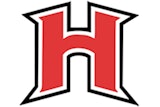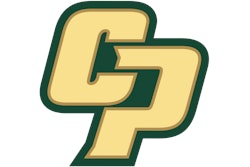![[Photo courtesy of Stephen F. Austin State University]](https://img.athleticbusiness.com/files/base/abmedia/all/image/2018/05/ab.oneONone518_feat.png?auto=format%2Ccompress&q=70&w=400)
Employed in church recreation as a high school and college student, then municipal rec upon graduation, Ken Morton didn't land his first job in collegiate recreation until 1993. Once he did, Morton knew he had arrived. "I fell in love with it," he says of his rec directorship at McMurry University in Abilene, Texas. "I knew exactly right then that was going to be my home for the rest of my career." His base of operation has changed — California State University, Sacramento, for nine years and his current Stephen F. Austin State (back in his home state of Texas) since 2010 — but the sense of belonging hasn't budged. Morton can now add to his resume the title of NIRSA president, a one-year stint whose May 1 starting date coincides with the launch of a new partnership between NIRSA and Athletic Business. AB senior editor Paul Steinbach asked Morton to share his thoughts on that relationship and the current state of campus rec.
What about collegiate recreation speaks to you?
It's the demographic, number one. It's the students we work with. I've run kids' after-school programs, I've run adult classes and programs for seniors, but working with college students is just the best. You get a chance to get to know them and see them develop over their time with you. It really is about that developmental piece, helping them get the skills they're going to need to advance in their career — whether it's in recreation or accounting or whatever it is. You're helping mold them and influence them, not only in health and wellbeing, but also in their career track.
NIRSA no longer calls itself the National Intramural-Recreational Sports Association. What's the story behind that?
We've gone through a couple of changes. When we first were developed, it was 12 historically black colleges that came together and called themselves the National Intramural Association — NIA — and then over time we branched out and became the National Intramural-Rec Sports Association, because we started having more things under our title, not just intramurals. As we've grown — and as collegiate recreation has expanded and added fitness and wellness and outdoors and all these different things that we're doing — the title just wasn't really fitting anymore, so the NIRSA acronym just become kind of a noun. It's "NIRSA" with a tagline, "Leaders in Collegiate Recreation."
Do you have a vision for NIRSA over the next year?
We're guided not so much by the vision of the individual coming in as president but by our strategic plan. Our new strategic plan is actually about our value proposition and four pillars that we're going to be focusing on over the next three years moving forward. Those are to be a driving force in an integrated approach to health and wellbeing on campus; to be an advocate for the impact of our profession; to evolve NIRSA's structures to develop timely, relevant and accessible learning opportunities; and then we're going to start looking again at our brand identity. Is what we're calling ourselves now actually doing us the service that it needs to? Do people outside of our field actually know what it means when we say "Leaders in Collegiate Recreation," or should we look at how to brand ourselves? All the decisions that I and the board make will be pushing us toward those four pillars.
Do institutions look at their rec departments differently today than they did in 1993?
Definitely. I think it's always been an important part, but certainly now we have multimillion dollar facilities. We're sometimes the largest and most-expensive facilities on campus. I know our athletics recruits get brought to our facility. All of our incoming students get brought to our facility. It's a showcase — this great thing we have here for you to expand what you do outside the classroom that's going to help you inside the classroom. One of the great things about recreation and why I love working in it is that we get to be collaborators, and we get to reach out to everybody on campus and say, "How can we help you meet your mission? How can we help your students do better in the classroom?" It might be us going and leading a classroom in teambuilding. Or they come out to our ropes course, and then the whole rest of their semester, they're more willing to talk and engage with each other. We've had a communications professor who was like, "Man, I want to bring my kids out there every time, because they got so much more out of my class just from that one-day experience." So, the more we can reach out the better off we are.
What was it like to help develop a new rec center while you were at Sacramento?
I had taken a facilities design class in my Master's program, and it was great. It prepared me in a lot of ways to know what I was talking about, but, man, it in no way prepared me for the amount of minutia and work that goes into planning a facility — everything from where an outlet and an internet jack goes into every office, and where every cardio machine gets hooked up, to the big things of what it is going to look like. There's a lot that goes into that, you spend a lot of time, and it's agonizing. There are value-engineering meetings where you go in and hear, "We've got to cut $5 million out of the budget. How do we do it and what are we cutting?" But ultimately it's very, very rewarding. I was very glad that I got to be a part of that. Everybody that goes to that facility in Sacramento now goes, "Oh, my gosh. This is fantastic." And I get to say, "Yeah, I had a part in that."
How involved were you personally in this new partnership with Athletic Business?
Not a lot, actually. We have a really great NIRSA headquarters staff. Our executive director Pam Watts is fantastic, and so I think my role and the board's role was just to encourage Pam in the direction she was wanting to go with this, and that she and her staff were trying to work toward. Certainly, she kept us in the loop, and we were all for it and were kind of cheerleaders to help see it happen.
Why did Athletic Business appeal to NIRSA as an editorial partner?
One of the things that we definitely want to do is expand our reach, especially with our new strategic plan coming forward. We want to be able to tell our story about campus recreation and wellbeing to external audiences, and what we've been using primarily has been internal — our website, social media and newsletters. Athletic Business has been an associate member of ours since '97, so we've always had a great relationship with AB. You guys are a recognized leader in media. We want to broadcast our stories to a broader audience, and you help us do that. And more importantly, you share our values and have a reputation of being a good collaborator. When Pam and her team were telling us about this partnership and how our values align with your values and how we'd be able to expand our reach, it was really exciting for us as a board to hear that. We're excited to partner with you guys. We've got 4,500 members and you have a readership of 40,000, so to expand is just really great for us to help us tell our story.
What's the story you want to tell?
The magic that happens inside the rec center is what matters. The power of rec sports and an integrated approach to health and wellbeing can be transformational, not only for the individual students who are involved, but for communities. Creating and strengthening a sense of belonging and community is huge for us. How do we create communities so that people feel like this is the place for them — that they belong? By helping them develop lifelong habits around health and wellbeing, and by serving as a platform for issues such as civil discourse, social justice, inclusion, making sure we have something for everybody. And then the last one that I'm really passionate about is developing those transferrable skills that employers are looking for, to enhance a student's ability to be successful in their career and in their life. We're one of the biggest employers on campus. I have a duty to make sure that our employees get something positive out of that experience — not just that they put in their time and get a paycheck, but that they really get some transferrable skills and learn some things that are going to be helpful to them along their journey in life. That, to me, is the exciting story about what we have going on inside our walls and in our programs. You won't find a campus rec professional who doesn't believe in that.
This article originally appeared in the May 2018 issue of Athletic Business with the title "NIRSA president discusses strategic plan, AB partnership." Athletic Business is a free magazine for professionals in the athletic, fitness and recreation industry. Click here to subscribe.





































